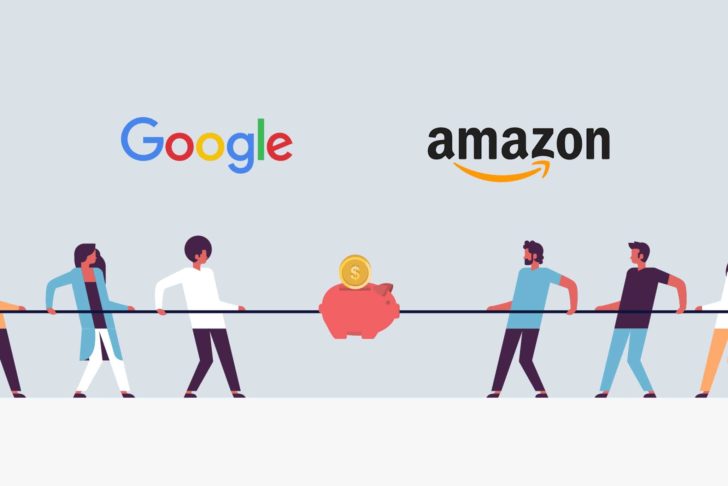Let’s say you’re looking for a new toaster. You will probably use a search engine, of which Google is the most prominent. But many of those product searches on Google benefit the world’s biggest retailer, Amazon. In order to better understand the symbiotic relationship between Google and Amazon, SEO and content marketing platform Searchmetrics has released a study based on 10,000 keywords, “Amazon vs. Google: The Battle for Product Search.”
Those keywords generate an Amazon-located product as the first organic result in a Google desktop search. No searches with the word “Amazon” were included.
Why AdWords?
The study found that, even when Amazon has the first search result, it also has at least one – and sometimes more – additional lower level organic search results for nearly half the searches.
And that’s not all. AdWords listings for products on Amazon show up alongside product searches on Google for 10.5 percent of the keywords, above or below the organic search results. AdWords is now called Google Ads, but the report uses the old term to distinguish from other kinds of Google Ads.
So, why would Amazon need to invest in paid AdWords, if it already is ranked first in Google search results for so many products?
The reason, as detailed in the Searchmetrics study: AdWords give Amazon a dominant presence on the results page for those product searches.
Amazon helps Google
Here is a screenshot from the study, showing Google results for the search term “outdoor curtains.” The product on Amazon is the first organic result, but the Amazon AdWords ad is the first return on the page, plus the Amazon-sold product is shown in two ads in the accompanying Google Shopping ads box.

From the Searchmetrics report
As the study says: “Amazon fights back against its competitors by purchasing a large number of AdWords itself, even when it has the top free result. However, as Google benefits whoever buys AdWords, and Amazon is paying for listings despite having the most relevant organic result, [Google also benefits].”
Google’s Shopping Ads (AKA Product Listing Ads) show up for 56 percent of the results pages where Amazon is the top organic result, and Amazon results appear in nearly a third of the Google Shopping box results.
The Searchmetrics study said this means that “Amazon’s organic snippet [result] is competing for searchers’ attention with a carousel of product offers” in Google Shopping ads. In some cases, the Shopping unit – especially if it is followed by one or two paid AdWords – can push Amazon’s first organic result down below the fold for desktop user. But Amazon is more than covered with AdWords ads and ads in the Shopping unit.
‘Strong presence’
Additionally, most images shown on a results page where Amazon is the top organic result include an Amazon image.
When Amazon is the top organic result for “outdoor curtains” or whatever, the retailer will often have a product image shown whenever Google shows images on the page, which is about 44 percent of the time. Related videos appear for nearly 35 percent of searches.
“This is a strong presence for a single domain,” the study says, “and one which underlines the investment Amazon makes in paid advertising in Google search, in order to complement its rankings at the top of the search results.”
But Google has little choice but to support this Amazon presence for product searches, because these are relevant results, and because Amazon’s AdWords purchases are a substantial revenue source.
Related reading

SEO specialists reveal the most effective tactics and trends for search in 2020. It also includes Google’s priority and SEO industry sentiment and ethics.

President and Founder of E2M Solutions Inc, walks you through key trends that can give impressive email marketing returns in 2020. Examples included.

Fractl’s Marketing Director, Amanda Milligan relaunches her podcast show and lets us in on the three biggest podcast tips, learnings, and experiences.

Client Services Lead, Lauren Crain talks about how B2Bs, B2Cs, and ecommerce SMBs can align goals and tests to get on the right path for 2020 growth.
